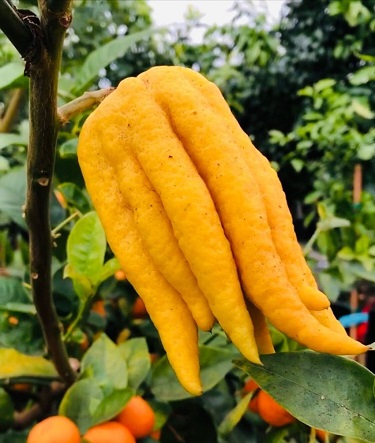The Buddha’s Hand plant, scientifically known as Citrus medica var. sarcodactylis, is a remarkable and exotic citrus fruit that has captivated people for centuries. With its striking appearance resembling multiple yellow finger-like protrusions, this unique fruit has earned its place in history not only for its aesthetic appeal but also for its culinary and medicinal uses. In this article, we will explore the rich history of the Buddha’s Hand plant and provide you with insights on how to cultivate this intriguing specimen in your own home or greenhouse.
A Glimpse into History
The origins of the Buddha’s Hand plant can be traced back to India and China, where it has been cultivated for over 2,500 years. The fruit’s unusual shape is believed to symbolize fingers in a gesture of prayer, reflecting its association with Buddhism. It was often used as a religious offering in Buddhist temples and monasteries, hence the name “Buddha’s Hand.” Over time, the plant made its way to other regions of Asia and eventually to the Mediterranean, where it became a symbol of prosperity and happiness.
Characteristics of Buddha’s Hand
The Buddha’s Hand plant is a citrus variety that belongs to the Rutaceae family. It can grow up to 10 feet in height and is characterized by its long, finger-like yellow or green fruit segments. The fragrance of the fruit is particularly remarkable, emitting a sweet and lemony aroma that can perfume an entire room. While the fruit itself is not typically consumed due to its lack of pulp and seeds, the zest and essential oil extracted from its skin are highly valued for culinary purposes.
Cultivating Buddha’s Hand
Growing a Buddha’s Hand plant in your home or greenhouse can be a rewarding experience, but it requires specific care and attention to thrive. Here are the key steps to successfully cultivate this unique citrus:

1. Climate and Location
Buddha’s Hand plants thrive in warm, subtropical climates. If you’re growing it in a greenhouse, ensure it receives ample sunlight or provide artificial lighting if necessary.
2. Soil and Container
Use well-draining soil with a slightly acidic to neutral pH (around 6.0-7.0). Choose a large, well-ventilated container with good drainage for indoor cultivation.
3. Planting and Watering
Plant your Buddha’s Hand seed or cutting in the container and keep the soil consistently moist, but not waterlogged. Ensure good airflow around the plant to prevent fungal issues.
4. Temperature and Humidity
Maintain a temperature range of 60-75°F for optimal growth. Humidity levels should be moderate, ideally between 40-60%.
5. Fertilization
Apply a balanced citrus fertilizer during the growing season (spring to early summer) to promote healthy growth.
6. Pruning
Regularly prune your Buddha’s Hand plant to maintain its shape and remove dead or diseased branches.
7. Pest and Disease Control
Keep an eye out for common citrus pests like aphids and scale insects. Practice preventive measures and use appropriate treatments if necessary.
Harvesting and Uses
Buddha’s Hand fruits are typically harvested when they are fully yellow, and the fingers are well-formed. While the fruit itself is not commonly eaten, the zest is highly prized for its strong lemony aroma and flavor. It can be used in various culinary applications, including baking, flavoring beverages, and making candied peel. Additionally, the essential oil extracted from the zest is used in perfumes, soaps, and aromatherapy.
Conclusion
The Buddha’s Hand plant is not only a captivating addition to your home or greenhouse but also a symbol of history and tradition. Its unique appearance and aromatic zest make it a valuable asset in the kitchen and beyond.
Related Articles & Free Email Newsletter Sign Up
4 Herbs That Help Boost Your Immune System
How to Grow Yuzu Plants in Your Garden, Home, or Greenhouse
The Fascinating World of Finger Lime Plants: Growing and Cultivating this Unique Citrus Gem




Comment here